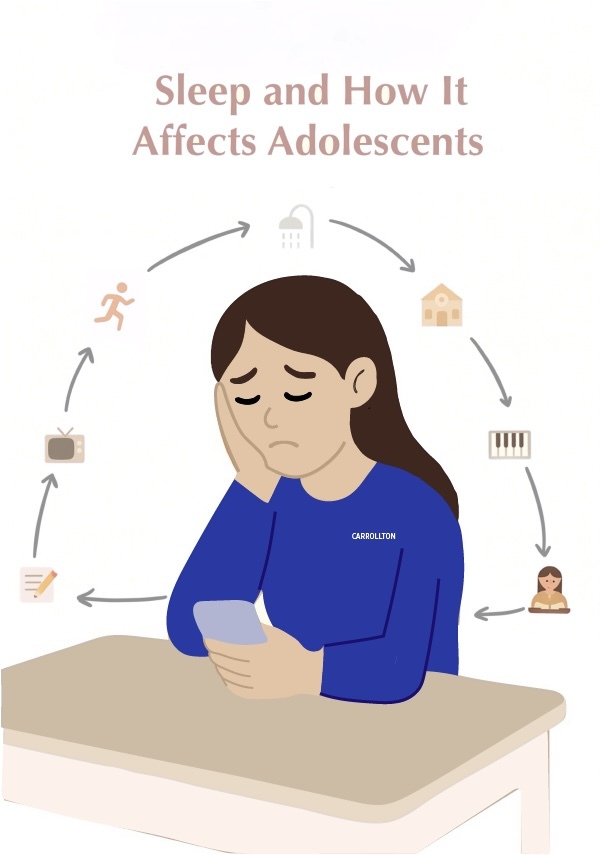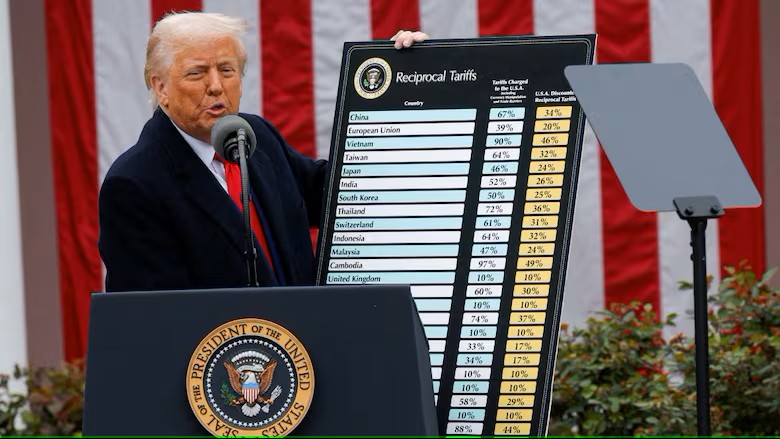“Whatever they tariff us, we tariff them. Whatever they tax us, we tax them,” Trump said in and address to Congress last month.
In March, Trump’s 25% tariffs on Mexico and Canada went into effect, and on Wednesday, Trump declared a 10% baseline tax on imports from all countries “and a 34 percent tax on imports from China.” These tariffs threaten to reshape international relations and impact consumers and business owners.
With all of the news about these historically unique tariffs, it’s important to understand that tariffs have long been a key tool in the United States’ trade strategy, dating back to the nation’s founding. In fact, one of Congress’ earliest actions was the passage of the Tariff Act of 1789, which sought to safeguard domestic industries and generate revenue for the nascent government. At the time, tariffs were the primary source of federal revenue until the introduction of the income tax during the Civil War. Now, Trump is looking to return to the past by raising tariffs to fund the federal government and lower taxes.
One reason Trump’s trade policies are unique is that tariffs have been historically motivated by external factors such as reciprocating other tariffs already imposed by trade partners or addressing trade deficits. Now, Trump is using tariffs to combat “the extraordinary threat posed by illegal aliens and drugs.”
In addition, Trump’s tariffs will be implemented very broadly. “What’s unusual about Trump is he’s not just picking out particular industries that he thinks are of strategic importance, but he’s blocking imports across the board almost with some of these countries,” said Douglas Irwin, an economics professor at Dartmouth College.
Finally, these tariffs are historically high. Tariffs on imported goods have typically been around 2.5-6% but can be even lower or nonexistent as a result of trade agreements. Trump’s 10% tariffs are around two to four times that, and his tariffs on China, Mexico, and the European Union are even higher.
While raising tariffs could help raise money for the government, reciprocal measures from other countries could offset these gains. In fact, this morning, China imposed a “34% retaliatory tariffs on all goods imported from the U.S.” They are scheduled to take effect on Thursday, “12 hours after the American tariffs take effect”.
Notably, this is not the first time Trump has dealt with retaliatory tariffs. During his first term in 2018, farmers experienced significant losses in revenue after China implemented tariffs in retaliation. According to the Council of Foreign Relations, “The damage was so great that the Trump administration authorized $61 billion in emergency relief payments.”
But, despite this experience, Trump doesn’t show signs of backing down.
So what does all this mean for consumers? Well, as other nations impose their own tariffs, these costs will fall onto U.S. businesses that import foreign goods. Not only will business owners have to pay more for foreign goods, they may also find it more difficult to sell their goods to other countries.
According to the Cost-Push Inflation Theory, these owners may have to charge more for their products or reduce their workforce to compensate for higher costs.
And, while Trump asserts that higher tariffs will boost American production, the truth is, the United States has not and, in some cases, cannot produce certain goods. According to Tory Lee at the University of Chicago, “approximately 60% of U.S. vegetable consumption comes from Mexico, and 25% of crude oil processed by U.S. refineries comes from Canada. Even 80% of U.S. toys originate in China.”
It has yet to be seen if American production can keep up.
And what does this all mean for global relations? “This is a completely different vision,” said Greg Grandin, a historian at Yale, “one in which the first principle is that nations don’t have shared interests; they have inherent conflicts of interests.” Due to these trade policies, many worry that the United States will grow increasingly isolated, breaking a tradition of multilateral cooperation that has existed since post-World War II. According to Lee, “Decades of diplomatic effort to negotiate these treaties, build trust and develop a system to address economic frictions have been abandoned.”
As we wait to see the ramifications of this trade war, we can only hope that Trump has a plan to address the negative consequences consumers and business owners will face. We may be going down a dangerous path, but in times like these, fear should not further divide us. We must remember that political unity, not partisanship, will help us navigate the uncertainty ahead.






































